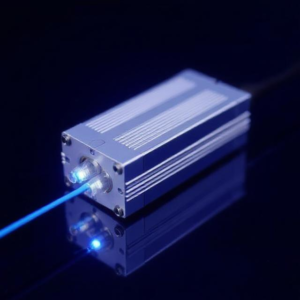What is an Optical Network?
An optical network is a type of communication network that uses light to transmit data instead of electrical signals. The light travels through optical fibers, which are special cables made of glass or plastic that carry light signals over long distances.
Think of it like sending messages through a fiber-optic highway where the vehicles are light signals that carry information.

How Does Optical Network Design Work?
Optical network design is the process of planning and building a network that uses light signals (sent through optical fibers) to connect different places, such as cities, data centers, or internet users.
Here’s how it works:
- Using Light to Transmit Data:
- Optical fibers carry light pulses, which represent data (like internet traffic, phone calls, or video).
- Light signals can travel very fast, and they don’t lose energy over long distances like electrical signals do. This makes optical fibers very efficient for transmitting large amounts of data over long distances.
- Designing the Network:
- The design part involves deciding how to connect different places (like homes, offices, or cities) using optical fibers.
- Engineers plan how to lay down the optical fiber cables, where to place equipment like optical switches or routers, and how to make sure the data gets to its destination as quickly and reliably as possible.
- Choosing the Right Components:
- To make sure the data flows smoothly, engineers choose the right optical components (like amplifiers, repeaters, and multiplexers) that boost the light signals, allowing them to travel even farther.
- Multiplexing is a technique used to send multiple data signals at once over a single fiber, which maximizes the fiber’s capacity.
- Network Topology:
- In optical network design, engineers choose the topology or structure of the network. This refers to how the different parts of the network are connected to each other. For example, some networks might connect cities in a ring (where each city is connected to two others in a circle), or in a mesh (where every city is connected to several others).
Why is Optical Network Design Important?
- Fast and Efficient Communication:
- Optical fibers can transmit data at very high speeds, which makes them ideal for modern internet, phone, and television services. This is why most of the world’s internet connections use fiber-optic networks.
- Long-Distance Communication:
- Unlike traditional copper wires, optical fibers can send signals over very long distances without losing much signal strength. This makes them perfect for connecting cities, countries, and even continents.
- High Capacity:
- Optical networks can carry a lot of data at once. This means that they can handle the growing demand for data as more people use the internet, watch videos, and play online games.
- Low Latency:
- Since light travels so quickly, optical networks have low latency (or short delays). This is important for applications like video calls, online gaming, or real-time data exchange.
Where is Optical Network Design Used?
- Internet Backbone: Optical networks form the backbone of the internet, connecting cities, countries, and continents.
- Data Centers: Optical networks are used to connect servers in data centers, allowing for fast data transfer between them.
- Telecommunications: Telephone and TV services often use optical networks to deliver high-speed internet and TV signals.
- Undersea Cables: Optical fibers are laid under the ocean to connect continents and allow global communication.
In Summary:
- Optical Network Design is the process of planning and creating networks that use light signals transmitted through optical fibers to send data quickly and efficiently.
- Optical networks are faster, can carry more data, and work over longer distances than traditional copper wire networks.
- These networks are used to power the internet, phone systems, and TV services, and they are key to keeping our connected world running smoothly.











